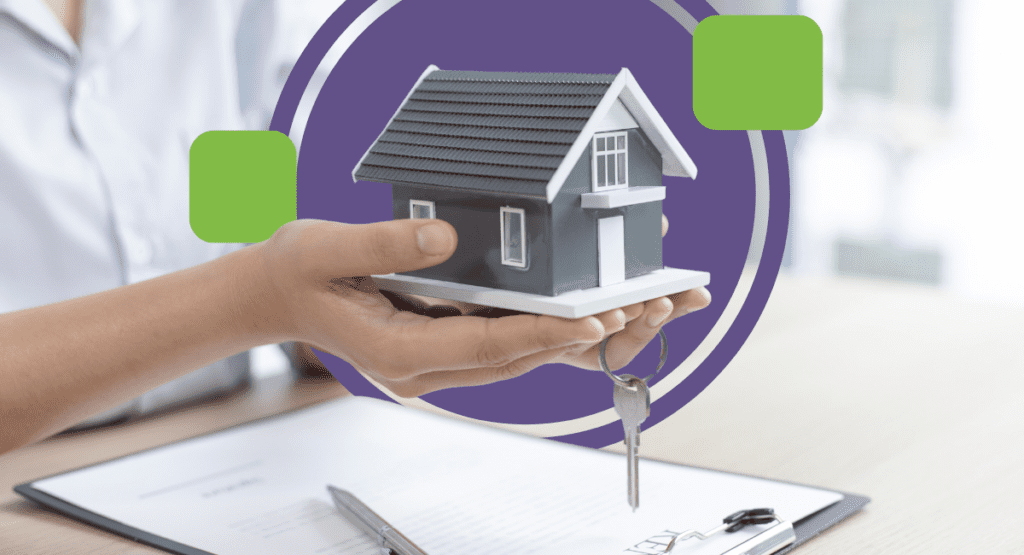Many first-time home buyers assume they need to save up for a 20% down payment. But several programs allow for $0 down mortgages. Most options are available through a government-backed loan, such as the VA Loan or a USDA Loan. But medical professionals can access up to 100% home financing and exclusive perks with a physician mortgage loan.
Keep reading to learn how you can benefit from using a zero-down mortgage during residency and beyond.
Why a $0 down physician mortgage makes sense for doctors and dentists
The main benefit of using a zero-down mortgage is the ability to buy a home without spending years saving up for a large down payment requirement. With a conventional loan, you’ll need to bring 20% of the home’s purchase price to the table, which can be a substantial chunk of money.
For example, if you buy a modest $500,000 home with a 20% down payment, you’ll need $100,000 right out of the gate.
Even if you have a down payment ready, a $0 down mortgage can free up capital for other financial priorities.
Access to 100% home financing is the most obvious benefit of a zero-down mortgage. But let’s look at some of the other exclusive benefits of using a physician mortgage loan specifically.
You can avoid private mortgage insurance payments
Conventional loans with less than a 20% minimum down payment generally require private mortgage insurance (PMI). This added cost is usually around 0.02% to 2% of the loan amount each year. But it could be more, depending on your mortgage lender.
PMI can increase your monthly mortgage payment by several hundred dollars or more. But it doesn’t benefit the homeowner in any way. It only protects the lender if you stop making payments.
However, with a physician mortgage, you can buy a home with little to no down payment and avoid PMI payments altogether.
Other $0 down mortgage options come with extra fees
You won’t have to worry about extra fees when using a physician mortgage loan. But you might have some hidden costs when using other zero-down mortgage options. Here’s what we mean:
- U.S. Department of Veterans Affairs (VA) Loan funding fee. The VA Loan can be a great $0 down mortgage for service members and veterans. However, you’ll likely encounter a one-time VA funding fee of up to 3.3% of the loan amount. Note the funding fee varies by down payment and whether this is your first time using the VA Loan.
- U.S. Department of Agriculture (USDA) Loan guarantee fees. USDA Loans include an initial guarantee fee of 1% of the loan amount and an annual guarantee fee of 0.35% on the outstanding principal.
- Federal Housing Administration (FHA) Loan mortgage insurance fees. Although the FHA Loan isn’t a zero-down mortgage, it’s a popular low down payment loan alternative for borrowers with lower credit scores. It requires mortgage insurance premiums (MIP), which include both an up-front fee of 1.75% of the base loan amount and annual payments.
These fees often come as a surprise at closing, which might lead some borrowers to roll up-front fees into their loan amount — costing them more over the life of the loan.
Your medical or dental school loans won’t hold you back
Physician mortgage loan programs recognize that student loans are necessary for your career. How else could you afford the high cost of medical school or dental school? So, they will treat your student debt more favorably than conventional underwriting.
For example, some physician mortgage lenders exclude student loan debt from their debt-to-income (DTI) ratio calculations. Others might use a percentage of your balance or your actual income-driven repayment (IDR) monthly payment.
You can buy a home before starting your residency
Conventional mortgages have strict underwriting, particularly when it comes to income requirements. But a physician mortgage gives you the option to close on a new home up to three months before starting your residency. You just need an employment contract that includes your start date.
Note this benefit varies by lender. But 90 days is the general standard for most physician mortgage programs.
You’ll have access to higher home loan amounts
Physician mortgages allow for high loan limits without needing a jumbo loan, which usually comes with a higher interest rate. Depending on the lender, you can access loan amounts ranging from $750,000 to $2 million.
You can keep cash reserves for other expenses or investments
One of the hidden benefits of using a $0 down mortgage is the opportunity to use your down payment savings for other financial goals.
This might include dedicating the funds to other housing expenses, such as home renovations or repairs, to avoid taking on high interest personal loans. Or maybe you prefer to use it for the cost of moving across the country for residency or paying for furnishings or decorating services.
Alternatively, you can take that large sum and invest your down payment strategically.
The point is that a physician mortgage loan gives you options that a conventional loan doesn’t
Potential drawbacks of using a doctor home loan
No down payment, no PMI, high loan limits and flexible income documentation make physician home loans a top contender for $0 down mortgages. But that doesn’t mean they are the right fit for all healthcare professionals. Here are some things to consider:
- A $0 down payment might limit your loan amount or vice versa. Many physician mortgage lenders cap their $0 down payment options at loan amounts around $750,000. If you want a $1 million to $2 million loan, you might need a 5% or 10% down payment.
- Some degrees might not be eligible. Doctors (MD, OD) and dentists (DMD, DDS) typically qualify. However, many programs have extended eligibility to include other medical professionals and high-income professions.
- You won’t have immediate home equity. If the housing market in your area dips dramatically, you could end up with an underwater mortgage where you owe more than your house is worth.
- You might not have options for a 30-year fixed rate. Most physician mortgage programs offer adjustable-rate mortgage (ARM) options. However, only select lenders offer traditional 15-year and 30-year fixed interest rates.
Additionally, you might borrow more than you can safely afford with a physician loan.
With higher loan limits and more relaxed underwriting guidelines, you’ll likely qualify for a larger loan than you would with a conventional loan. So, it’s easy to fall victim to house creep and start looking for bigger, better houses.
How to choose the right $0 down mortgage for you
No-money-down mortgage programs can make homeownership a reality sooner than a conventional timeline. You don’t need to choose between saving up for a 20% down payment or getting stuck with costly PMI payments. Instead, you can look at which $0 down mortgage loan options are available for your situation.
You’ll want to compare program details, eligibility guidelines (e.g., minimum credit score requirement, property type, etc.) and mortgage rates. In most cases, a physician home loan for your primary residence will offer the most benefit. But not always. For example, if you or your spouse are a veteran with a disability rating, a VA Loan will likely beat out a physician loan.
We recommend comparing at least a few of the top physician home lenders to get the best mortgage rate. Fill out the form below to receive quotes for your next home purchase or refinance.

